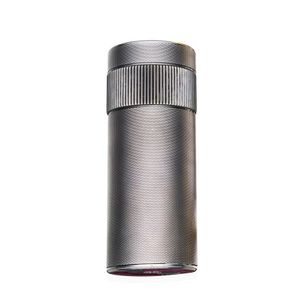Wedgwood Basalt Arcadian Spill Vase, Early 20th Century
You must be a subscriber, and be logged in to view price and dealer details.
Subscribe Now to view actual auction price for this item
When you subscribe, you have the option of setting the currency in which to display prices to $Au, $US, $NZ or Stg.
- Basalt - Basalt is a hard, dense volcanic rock formed from the rapid cooling of basaltic lava, and makes up most of the earth's oceanic crust.
However it is also the name given by Josiah Wedgwood in 1768 to a fine black unglazed porcelain which he called Wedgwood Black Basalt.
Using this fine-grained stoneware he was able to produce copies of the newly excavated Etruscan pottery from Italy, with a lustrous and smooth, surface, and this new innovation proved to be a huge commercial success. - Arcadian Landscape / Setting / Scene - An Arcadian landscape is a type of landscape that is characterized by its peaceful, idyllic, and rustic setting. It is often associated with the idealized countryside of ancient Greece, and it is often depicted as a rural landscape with rolling hills, forests, streams, and meadows. Arcadian landscapes are often depicted in art and literature as being a place of retreat, where people can escape the stresses and demands of modern life and find a sense of peace and solitude. They are often associated with the concept of Arcadia, which was a region of ancient Greece that was known for its beauty and tranquility.
- Floral Swag / Garland / Festoon - Floral swags are a decorative motif often used in the ornamentation of various objects, such as silverware, glassware, and furniture. The term "swag" refers to a garland or wreath of flowers, foliage, or other decorative elements, which is usually arranged in a loop or curve.
Floral swags can be found in a variety of decorative styles, from ornate Baroque and Rococo designs to more naturalistic Art Nouveau and Art Deco styles. They are often used to add a touch of elegance, refinement, or whimsy to an object, and can be seen on a range of items from chandeliers and candlesticks to picture frames and tea sets.
In the decoration of silver objects, floral swags are often used to accentuate the curves and lines of the piece, and to add visual interest to the surface. Similarly, on glass objects, floral swags may be used to frame or highlight a particular area of the object, or to add a touch of color and delicacy.
On furniture, floral swags can be found on a variety of pieces, from cabinets and armoires to chairs and sofas. They are often used to enhance the lines and curves of the furniture, and can be used to create a sense of movement and flow in the design.
Overall, floral swags are a versatile decorative element that can be adapted to a range of styles and applications, and have been used in the decoration of various objects throughout history. - Spill Vase - Popular in Victorian times, a spill vase was a vessel for holding thin slips of wood or spills of paper with which to light a candle or pipe from a fire. For ease of access to the fire, they usually sat on the mantlepiece or had a hole in the back, so they could be hung from a wall. Their use declined with the with the evolution of heating through use of electricity and the use of safety matches in the late 19th century.
- Acanthus - A stylized leaf motif, one of the primary decorative elements of classical Greek and Roman architecture, derived from the genus of flowering plants in the family Acanthaceae, native to tropical and subtropical regions of the Mediterranean area. It is a common element in classical Greek and Roman design, and is often seen in Corinthian and Composite order columns and used as a decorative element in English, European and Australian furniture, particularly on the curve of a leg, and as decoration for a corbel.
This item has been included into following indexes:
-
Wedgwood (England), item types
- black basalt ware 201
- vases and ewers 248
Visually similar items

A silver plated table lighter, S.T. Dupont, circa 1970's, engine turned decoration. Length 10.8 cm. Width 4.7 cm. Original fitted box. Marked S.T. Dupont, Paris, Made in France, Numbered E3958

A heavily carved bamboo brush pot carved forest and mountain scenes, 20 cm

Derek Smith (b. 1931), stoneware vase, c. 1960 of cylindrical form with brown striations to body, potter's stamp to underside 'Derek Smith, Blackfriars Pottery', together with an Elsa Arden lidded jar with sgraffito decoration, interior with dark green gla

A Chinese 'Puddingstone' snuff bottle 18th/19th century, the bottle carved in cylindrical form with a waisted neck, the stone of dark red and purple-grey tones, with a modern malachite stopper, 7.4 cm high.
